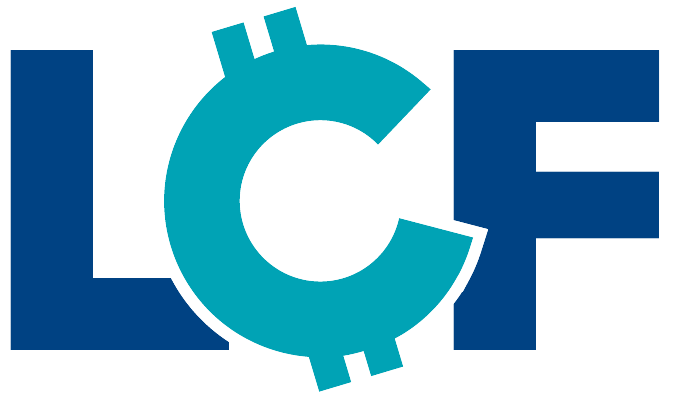Understanding APR: Why It Matters for Small Business Loans
Lets Get Started
As a small business owner, securing financing can be critical to growth and success. However, navigating the world of business funding can be overwhelming, especially when comparing different types of financing and financial institutions. One of the most important factors to consider when evaluating your options is the Annual Percentage Rate or APR.
This article will demystify APR, explain what it is, and explore why it matters for small business loans. By understanding the ins and outs of APR, you’ll be better equipped to make informed decisions when selecting the right loan product for your business, ensuring you get the best possible deal and setting your business up for long-term success.
What is APR?
Interest, at its most basic, is how much a lender charges to lend you money. APR (Annual Percentage Rate) is the total cost of borrowing money, expressed as an annual rate, typically in the form of a percentage. It includes the interest rate and any additional fees and charges associated with the loan, such as origination, processing, or closing costs. This allows borrowers to understand the true cost of a loan and compare different loan offers more accurately.
APR is a useful metric for small business owners to evaluate various financing options, as it provides a comprehensive picture of the total cost of borrowing over the life of the loan. A large loan with a low interest rate and a long repayment term can cost more in total interest than a smaller loan with a shorter repayment term.
By comparing APRs, business owners can make more informed decisions when choosing a lender and loan application that best meets their needs and offers the most favorable terms.
Why APR Matters for Small Business Loans
Understanding APR is crucial for small business owners for several reasons. Firstly, it helps you compare loan offers effectively. With various lenders offering different interest rates and fees, it can be challenging to determine which loan offer is the best deal for your business.
In general, higher interest rates are more expensive than lower interest rates, but it can be difficult to understand the full expense of your funding without annualizing that interest and including other fees. APR simplifies this process by providing a standardized metric that allows you to compare loan offers on an apples-to-apples basis.
By examining the APRs of different loan options, you can quickly identify the most cost-effective option, ensuring that you make an informed decision that best supports your business’s financial needs.
Secondly, APR provides insight into the total cost of borrowing. When evaluating a loan offer, it’s essential to consider the interest rate and any additional fees associated with the loan.
APR takes both of these factors into account, giving you a clearer understanding of the overall cost of a loan. This comprehensive view of loan costs enables you to make better decisions when choosing a loan product, helping you avoid potential financial pitfalls and save money in the long run.
Lastly, understanding APR assists in budgeting and cash flow management. Knowing the APR of a loan helps you estimate the monthly payments you’ll need to make, which is a critical aspect of managing your business’s finances.
By clearly understanding your loan’s APR, you can more accurately project your monthly expenses, allowing you to plan for these payments and manage your business’s cash flow more effectively. Proper cash flow management is vital for your business’s financial health and success, and understanding APR is a key component of this process.
Types of APR
There are two primary types of APR: fixed and variable.
Fixed APR
A fixed APR remains constant throughout the entire term of the loan. This means that the interest rate and monthly payments will not change over the life of the loan, regardless of fluctuations in the market or changes in the prime rate. This type of APR offers stability and predictability, making it easier for business owners to budget and plan for monthly payments. Fixed APRs are commonly seen in term loans, equipment financing, and some lines of credit.
The advantage of a fixed APR is that it protects the borrower from potential increases in interest rates. However, if market rates decrease, borrowers with fixed APRs will not benefit from the lower rates. Additionally, fixed APRs are generally higher than variable APRs at the beginning of the loan term to account for potential market fluctuations.
Variable APR
A variable APR, as the name suggests, can change over the life of the loan. Variable rates are tied to an index, such as the prime rate or LIBOR, and will fluctuate as the index changes. A variable APR consists of a base rate (the index) plus a margin determined by the lender, which is based on the borrower’s creditworthiness.
The primary advantage of a variable APR is that it often starts lower than a fixed APR, potentially saving the borrower money initially. However, the downside is the uncertainty and potential for the APR to increase over time. If market rates rise, borrowers with variable APRs will see their interest rates and monthly payments increase as well. Variable APRs are common in lines of credit and some short-term loans.
Factors That Influence APR
Several factors can influence the APR of a small business loan, including:
Credit score: Lenders consider borrowers with higher credit scores less risky and more likely to receive lower APRs.
Loan term: Longer loan terms can result in lower monthly payments but may come with higher APRs, increasing the total cost of borrowing over the life of the loan.
Loan amount: Larger loans may have lower APRs, as the lender can spread the costs of underwriting and servicing the loan over a more considerable amount.
Type of loan: Different types of loans come with varying levels of risk for lenders, which can impact the APR. For example, secured equipment loans often have lower APRs than unsecured credit cards because they’re backed by collateral.
Market conditions: Changes in market conditions and the prime rate can affect variable APRs, causing them to increase or decrease over time.
How to Compare Loan Offers Based on APR
When comparing loan offers, it’s essential to consider both the APR and the loan term, as these factors can significantly impact the total cost of borrowing. Here are some steps to help you compare loan offers based on APR:
When evaluating loan offers for your business, it’s essential to take a comprehensive approach to understand the true cost of borrowing and select the best financing option. Begin by reviewing the APR of each loan offer, bearing in mind that a lower APR typically signifies lower costs. Remember that fixed APRs offer stability, while variable APRs can change over time.
Alongside the APR, consider the loan term, as longer terms can result in lower monthly payments, although they may come with higher APRs. Additionally, examine any extra fees and charges, such as origination fees or prepayment penalties, which may not be factored into the APR calculation, as these can influence the overall cost of the loan.
Next, calculate the monthly payments for each loan offer based on the APR and loan term, ensuring that the payments can be comfortably managed within your business’s cash flow. To evaluate the total cost of borrowing, multiply the monthly payments by the number of payment periods, which will provide a more accurate comparison of the loans’ overall costs.
Tips for Obtaining a Good APR
Here are some strategies to help you secure a lower APR for your small business loan:
Improve your credit score: A higher credit score can result in more favorable APRs. Make sure to review your credit report for any errors and work on improving your credit history by making timely payments and reducing outstanding debt.
Shop around: Compare loan offers from multiple lenders, including bank loans and credit unions to find the most competitive APR.
Consider secured loans: Secured loans often come with lower APRs since they’re backed by collateral. If you have assets that can be used as collateral, this might be an option worth exploring.
Negotiate with the lender: In some cases, you may be able to negotiate a lower APR with the lender, especially if you have a strong credit score and business financials.
Shorten the loan term: Opting for a shorter loan term can result in a lower APR, although it will increase your monthly payments.
Conclusion
Understanding APR is crucial for small business owners seeking financing, as it provides insight into the total cost of borrowing and helps compare different loan offers. You can make informed decisions about your business financing options by considering both the APR and the loan term and evaluating additional fees and charges. Following the tips provided above can also help you secure a more favorable APR and reduce the overall cost of borrowing.




